Navigating the World of Linux Distributions (2019)
One of the first things I noticed when I switched to using Linux as my operating system of choice was the ABUNDANCE OF CHOICE. There is just so much to choose from, you can get lost in it all.
This blog post shares what I learned from making the switch and "distro hopping" trying to find the distribution I liked the most. And yes, distro hopping is something you will probably go through soon if you too are just starting out with Linux.
Repositories
https://www.kernel.org/pub/
https://git.kernel.org/
https://gitlab.gnome.org/GNOME
https://github.com/elementary
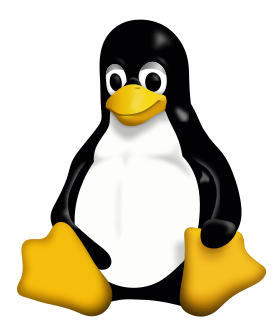
image from wikimedia: [email protected] Larry Ewing and The GIMP [CC0]
What is Linux?
Linux generally refers to operating systems based on the Linux kernel, an operating system kernel first released in 1991 by Linus Torvalds. The particular Linux operating systems we see are called distributions, which contain collections of software including the Linux kernel, drivers, desktop environments and various user applications to make a complete system.
Linux Distributions (Distros)
There are a number of Linux distributions, each offering different features and support from the maintainers. I will share my thoughts on the ones I have used.
Ubuntu
-black_orange-hex.svg.png)
image from wikimedia
Ubuntu was the first distro I used, which is expected because it is very popular. It is based on Debian (mentioned below) and is maintained by Canonical and community members. The operating systems for desktops and laptops come in two types:
Normal Version:
This gets a new release every six months and the current version is 19.04 released in April of 2019, and named after the year and month it gets released. It contains the latest version of all software offered by the Ubuntu distribution.
Long Term Support Version (LTS):
This version gets new releases every two years. It is suitable for use cases where stability is required, such as development environments. It mainly receives maintenance and security updates.
Most packages remain relatively unchanged in major ways, which means that there are fewer chances of apps breaking due to changes in dependencies. The latest version is 18.04.2.
ElementaryOS
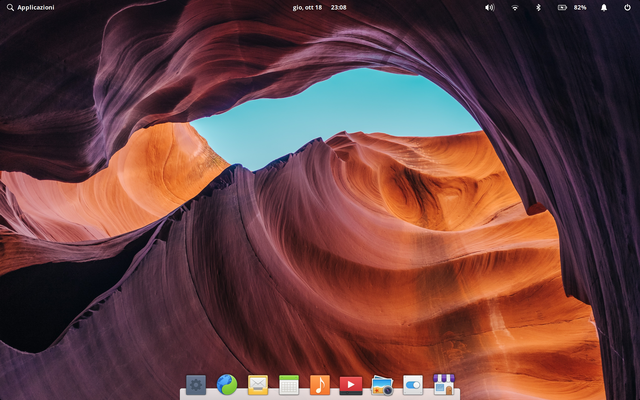
image from wikimedia: Francesco Palmas [CC BY-SA 4.0 (https://creativecommons.org/licenses/by-sa/4.0)]
Based on the Ubuntu LTS version, ElementaryOS is a distribution that offers a unique user experience through the Pantheon desktop environment. It's simplistic in design and comes with very minimal apps installed. One thing I like about this distro is its attention to detail when it comes to the user experience. Everything looks polished and is easy to understand and use.
Debian

image from wikimedia: Debian [CC BY-SA 3.0 (https://creativecommons.org/licenses/by-sa/3.0)]
Debian is one of the earliest operating systems based on the Linux kernel. It's a volunteer based project, with contributors coordinating on the Internet to maintain the distribution. Ubuntu is based on Debian and the two share common features.
Fedora

image from wikimedia
Fedora differs from Ubuntu in a few areas that I have noticed.
- Fedora is usually the first to implement new technologies among all distros and is considered "cutting-edge"
- It uses RPM as it's package management system where Debian and Ubuntu use APT
- I also like Fedora because their desktop environments are slightly closer to being "vanilla", with little modifications made on the defaults.
- Only free and open source software is included.
- It also offers KDE, XFCE, LXQt, LXDE, Cinnamon and Mate-Compiz as Fedora Spins.
Other distributions
There are other Linux distros, maintained by various organizations or communities, each with a unique offering to its target audience. Below are a few you can check out:
- Linux Mint: a community-driven Linux distribution that aims to be "modern, elegant and comfortable." It provides multimedia support by including proprietary software together with free and open-source software.
- Arch Linux: is a rolling release distribution (which means it is updated very frequently and has no batched releases). It is maintained by a volunteer community.
- Gentoo: is a distribution that provides source code instead of pre-compiled binaries like other distros, so you can compile the source locally according to your specific needs. Binaries are available for large packages or those with no available source code to compile from.
Desktop Environments
Reflective of the freedom that Linux avails, there are a number of different desktop environments that one can use. Each of these gives a unique experience, with different features for handling windows, graphical effects and layout, as well as different levels of customization you can make.
GNOME
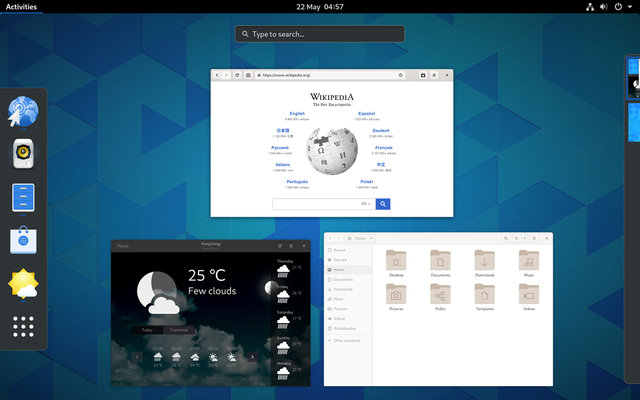
image from wikimedia: Filorinwiki [CC BY-SA 3.0 (https://creativecommons.org/licenses/by-sa/3.0)]
The GNOME desktop environment comes as default in most major distributions. It's an attractive and simple environment with just the options needed to work and no extra customization.
The Gnome Shell offers an overview mode, which lets you see your desktops and open windows clearly and is visually appealing. It really makes it easy to manage multiple windows in multiple workspaces.
Animations are used to give good feedback on transitions, which makes the desktop environment user-friendly. For those seeking a little bit more control over how things look, feel and behave, this might not offer the best of customization levels.
GNOME also comes with a number of useful apps like a terminal and file explorer, disk utility, log viewer and packages manager, all built to integrate well with the environment.
KDE
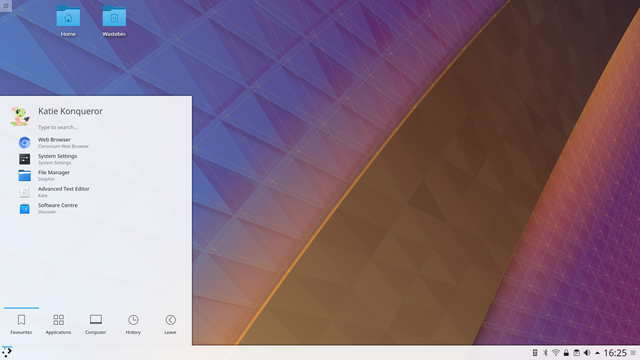
image from wikimedia: KDE [GPL (http://www.gnu.org/licenses/gpl.html)]
The KDE Plasma desktop is a highly customizable desktop environment. There are a plethora of options and settings for just about anything related to your OS. It can be a bit overwhelming if you're not accustomed to so many features, but to people who like to tweak everything, it is perfect.
KDE also comes with a good number of default apps that complement the experience.
XFCE
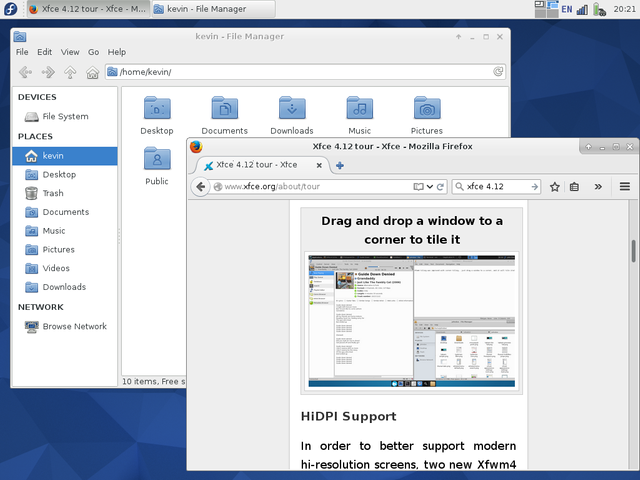
image from wikimedia: Kliu0117 [CC BY-SA 4.0 (https://creativecommons.org/licenses/by-sa/4.0)]
XFCE is a lightweight desktop environment that is easy on the resources. It is suitable for use with low-end machines and even high-end ones. It is fast and minimalistic, with just the basic apps. I also like that it has configurable panels that you can use to create a dock, workspace viewer, open-windows viewer and more.
Other desktop environments
There are many other options out there. Some lightweight examples include LXQt and LXDE. Another one is Pantheon, which is the flagship desktop environment used by ElementaryOS.
A different computing experience
In summary, using Linux is a computing experience that is different from Windows and MacOS. There are no lock-ins and you can switch distros at any time. All distros share the same secure kernel and as such are less prone to malware and viruses.
A lot of innovation is going on and many people around the world work to make these systems secure and enjoyable for all. I like using Linux and I am enjoying the freedoms and lessons it brings.
Hello, @imwatsi. Good to see you reviewing cool open source project such as Linux. Indeed, there is a lot of freedom one could get when they switch to using Linux, no wonder it is very popular.
We invited one of the founder and maintainer of the Elementary OS to share some great insight about the project a few weeks back. You might want to listen to the interview on our Podcast: Here. The session was very cool and fantastic.
On the content side of this post, in accordance with our guideline, this was a mixed bag for me. While the blog category is for promoting, reviewing and introducing new open source project, the current format allows only to review one project at a time. However, you can compare and contrast similar projects. Also, the projects you wish to review must have a public repository on Github or a mirrored repo from another platform on Github. Please do keep this in mind on your next open source review.
Your contribution has been evaluated according to Utopian policies and guidelines, as well as a predefined set of questions pertaining to the category.
To view those questions and the relevant answers related to your post, click here.
Need help? Chat with us on Discord.
[utopian-moderator]
Thank you for your review, @knowledges! Keep up the good work!
Thanks for the link to the interview @knowledges. I will check it out.
Hi @imwatsi!
Your post was upvoted by @steem-ua, new Steem dApp, using UserAuthority for algorithmic post curation!
Your post is eligible for our upvote, thanks to our collaboration with @utopian-io!
Feel free to join our @steem-ua Discord server
Hey, @imwatsi!
Thanks for contributing on Utopian.
We’re already looking forward to your next contribution!
Get higher incentives and support Utopian.io!
Simply set @utopian.pay as a 5% (or higher) payout beneficiary on your contribution post (via SteemPlus or Steeditor).
Want to chat? Join us on Discord https://discord.gg/h52nFrV.
Vote for Utopian Witness!